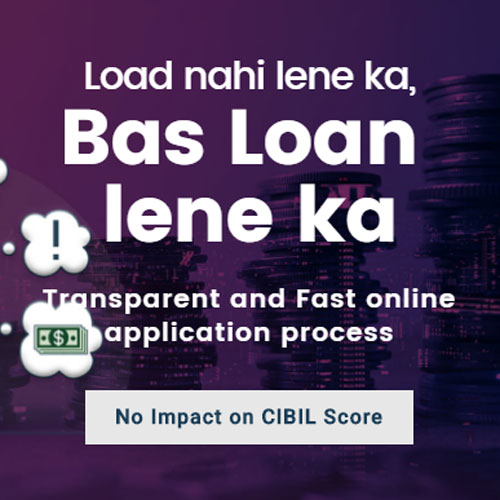Permanent Account Number or PAN, as it is commonly called, is a means of identifying various taxpayers in the country. PAN is a unique identification number assigned to Indians, mostly to those who pay tax. The PAN system of identification is a computer-based system that assigns unique identification number to every Indian tax paying entity.
Any PAN issued is valid for the entire lifetime of the PAN holder. This is so majorly because PAN is unaffected by any change of address of the PAN cardholder.
New Design for PAN Card
The Income Tax Department has prescribed a new format for PAN Cards issued after 1st January, 2017. The changes made to the new PAN Card have been listed below:
- A Quick Response (QR) code has been printed onto the new PAN Card which will carry details of the card holder. This QR code can be used for verification of data.
- New sections for the name of the card holder, the card holder’s father’s name, and date of birth have been added.
- The location of the PAN and the signature of the card holder have been changed.
PAN Card Application
PAN Card Application can be made either online at the NSDL website or by applying at any of the district level PAN agencies. Applications for new PAN allotment as well as those for correction or change of information can all be made by customers. Form 49A is the form that needs to be filled and submitted for application of new PAN.
Application forms for new PAN and reprint of PAN are different. Once, a user makes any of the above applications with regards to PAN, he/she can track the status of PAN application via the acknowledgement number furnished by NSDL.
A PAN card can be applied for through the NSDL (National Securities Depository Limited) as well as through the UTIISL (UTI Infrastructure Technology and Services Limited). Applicants can submit their PAN card applications either offline or online.
Online PAN Card Application Process
The online application process for a PAN card is mentioned below:
- Visit the TIN NSDL or UTIISL websites and select the ‘New PAN’ option
- Select Form 49A for Indian citizens (including NRE/NRI/OCI individuals)
- Fill in the details in the online form, mentioning details such as your full name, address, date of birth, gender, telephone number, income details etc.
- On filling the form, submit it and pay the processing fee
- Print the page with the 15 digit acknowledgement and sign in the space provided.
- Affix passport sized photographs on the acknowledgement, proof of identity and proof of address documents and Demand Draft (if you are paying through DD).
- The above are to be sent to the NSDL office by post within 15 days of submitting the online application.
- The PAN will then be sent to the address within 15 working days.
Offline PAN Card Application Process
- Download the PAN card application form from the NSDL or UTIISL websites or collect a copy from UTIISL agents.
- Fill in the form and attach supporting documents (proof of identity, address and photographs)
- Submit the form and documents to the NSDL office along with the processing fee.
- The PAN card will be sent to the address mentioned in the form within 15 working days.
Steps to Procure Duplicate PAN Card if you have Lost Your PAN Card
PAN or Permanent Account Number is an alphanumeric code consisting of ten digits that is provided to citizens by the Income Tax Department of India. This document is an extremely important proof of identity. However, in case someone loses or damages their PAN card, the steps below should be followed in order to procure a duplicate PAN card.
- Applicants must visit the official web portal of NSDL and apply for a ‘PAN Change Request’ form and fill in all the details.
- If applicants wish to procure a new card without changing any details or the PAN number in case they have lost or damaged their original card then after filling all details, they should not select any box on the left of the margin.
- As long as there are no changes to be made in the PAN card, their address will be updated in the database of ITD based on the address provided in the form.
- Once this is done, they will have to submit a document of identity proof such as passport or Aadhar number, a document for address proof such as Voter’s ID or utility bills, along with proof of issuance of PAN number such as a photocopy of the damaged/lost PAN card and submit the form.
- A nominal fee will have to be paid online either through credit card/debit card or net banking after which they will receive an acknowledgement through which they can track the status of their application.
PAN Card Application Do’s and Don’ts
- Remember to fill in all the details as per the identity and address proof documents you are submitting.
- Do get thumb impression attested by a Magistrate/Notary before submitting the form to avoid disqualification.
- Write the complete address and provide accurate contact details in the form.
- Do fill in the application form in capital letters.
- Don’t make corrections or over write anywhere on the form.
- Do not use initials in the first name or last name columns.
- Do not apply for a new PAN card if your old PAN card is lost/stolen/defaced.
Documents required for PAN
Certain basic documents for proof of address and identity proof are required to be furnished by the PAN applicant. NSDL verifies this information with their central database and rejection of PAN applications is not an uncommon thing when information furnished is incorrect or incomplete.
PAN Card Forms
- There are two types of forms for a PAN Card-
- Form 49A- Form 49A is the PAN Card Application form for all Indian citizens, whether they are residents of India or not. NRI (Non Resident Indians) can also apply for a PAN card using this form.
- Companies, firms, NGO (Non-Governmental Organisations), partnership firms, local bodies, trusts etc. also have to submit Form 49A when applying for a PAN card.
- PAN cards for minors and students have to be applied by submitting Form 49A as well.
- Form 49AA- this form is to be submitted by foreign nationals who are pay tax in the country. Limited Liability companies, firms, trusts, Body of Individuals and Association of Persons registered outside India are to submit Form 49AA duly filled in and signed when applying for a PAN card for tax purposes in India. OCI (Overseas Citizen of India) and NRE (Non Resident Entity) individuals will have to apply for a PAN card using this form.
- Entities applying for a PAN card by submitting form 49AA will have to submit their passport/OCI/PIO cards in addition to bank account statements from their resident country as proof of address and identity.
Tracking PAN Applications and Transactions
- The government has recently unveiled a programme by which it can track transactions made through a PAN card for the purpose of calculating tax. Known as the Income Tax Business Application-Permanent Account Number or ITBAN-PAN, it will enable the Income Tax Department to track every transaction made where a particular PAN number was quoted.
- All financial transactions such as mergers, acquisitions, liquidation, and amalgamation of PAN as well as dissolution information where a particular PAN card was quoted can be traced through the software.
- All existing PAN information and the entire database of PAN information has also been moved to this software.
Structure of Pan Card
Permanent Account Number is effective because of its uniqueness. It is an interesting thing to learn about the structuring of PAN. There is a lot of hidden information that goes into the making of the Permanent Account Number.
PAN is generated automatically by the online system by taking into account the information furnished by the PAN applicant.
-
- First Three Characters
The first three characters of PAN are a sequence of alphabets from AAA to ZZZ
- Fourth Character
The fourth character signifies the type of taxpayer that you are.
- A — Association of Persons (AOP)
- B — Body of Individuals (BOI)
- C — Company
- F — Firm
- G — Government
- H — HUF (Hindu Undivided Family)
- L — Local Authority
- J — Artificial Judicial Person
- P — Individual
- T — AOP (Trust)
- K — Krish (Trust krish)
- First Three Characters
So if an individual obtains PAN, his/her PAN will have the fourth character as ‘P’ which stands for individual taxpayer.
- Fifth Character
The fifth character in PAN is the first letter of your surname. So, if a person is named ‘Rajesh Khanna’, the fifth character of his PAN will be ‘K’
- Last Character
Types of PAN Cards
The Income tax Department has mandated that all tax paying entities register and possess a PAN card. While this applies to individuals, companies, partnership firms, NGO’s as well as foreign firms also come under the purview of this directive.
As a result, PAN cards are issued for individuals as well as companies.
PAN Card for Individuals
A PAN card for individuals is used to keep track and link all financial transactions that attract tax, with the IT department calculating the total taxable amount due on the basis of this data.
PAN Card for Companies
A PAN card for organisations is similar to that for individuals, with the exception that there is no photograph on the physical PAN card. Also in lieu of the date of birth mentioned on individual PAN cards, the date of registration of the company/organisation is mentioned.
PAN for foreign citizens in India
All foreign citizens who wish to carry out business in India are required to obtain PAN. The procedure for doing so is same as applicable to resident Indians. However, the application form for foreigners is form 49AA . All entities that are eligible to obtain PAN as Indian citizens are also eligible to obtain PAN as foreign citizens. This list includes entities like HUFs, individuals, trusts and so on.
The IT Department calculates the amount of tax the company/organisation is required to pay through its various transactions, all of which now require quoting the PAN card.
Mandatory uses of PAN
- PAN needs to be quoted while paying direct taxes
- While registering a business, PAN information needs to be mandatorily furnished
- Taxpayers need to input their PAN when paying income tax
- A lot of financial transactions require PAN information. Some of these transactions are:
- Sale or purchase of property (immovable) which is valued at Rs.5 lakh or above
- Sale or purchase of a vehicle except a two-wheeler
- Payments that are made towards hotels and restaurants and which are above Rs.25,000
- Payments made in connection with travel requirements to other countries. The amount in this case if it exceeds Rs.25,000, then an individual needs to quote his/her PAN
- Making payments of more than Rs.50,000 towards bank deposits in a bank
- Acquiring bonds by paying an amount equal to or greater than Rs.50,000
- Payments made for more than Rs.5 lakhs towards purchase of jewellery and bullion also require PAN information of the purchaser to be furnished
- Any purchase of mutual fund schemes
- Any amount greater than Rs,50,000 used towards purchasing shares
- Any payment of more than Rs.50,000 made towards acquiring an insurance policy needs PAN information of the policyholder
- To Remit money out of India
- Pan information is required for transfer of funds from NRE to NRO account
General uses/advantages of PAN
- Since PAN card contains information like Name, Age and photograph, it can be used throughout the country as a valid identity proof
- PAN is the best possible way to keep track of your tax payment. Otherwise, you might be required to pay it multiples times since your tax payment cannot be verified
- Since, PAN is unique for every entity and hence, misuse of the same is almost impossible for purposes of tax evasion etc.
- PAN card can be used as a document that is required to avail connections like electricity, telephone, LPG and internet.
- PAN is a unique identification number assigned to taxpayers and hence it is used to track all financial information like payment of taxes, investments made and debt liability of an entity, to a single customer.





